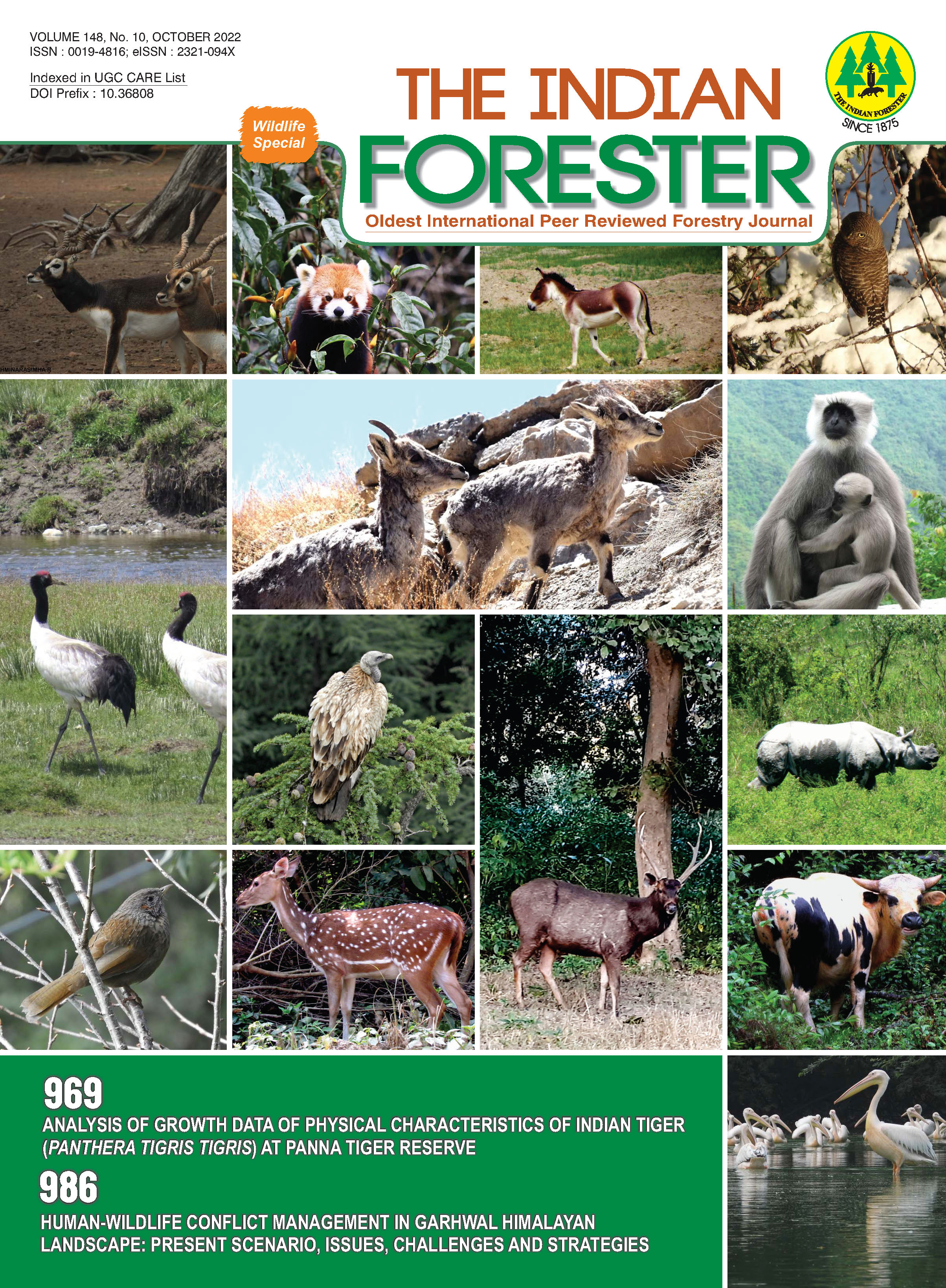A Preliminary Study on Insect Pollinators of New Forest Campus, Dehradun, India
DOI:
https://doi.org/10.36808/if/2022/v148i10/167321Keywords:
Pollination, Syrphidfly, Honey bee, Butterfly, Host plants, New forest campus.Abstract
The present study was undertaken to find out the insect pollinators associated with some plants in the New Forest Campus, FRI, Dehradun, India. The observations were taken by three different methods from April to July 2020. The study revealed that 45 insect pollinator species belonging to four orders and ten families were present in the campus. A total of 32 flowering plant species were observed to be visited by 45 insect pollinators among them species richness of butterflies was maximum followed by non apis bees, apis bees, wasps and syrphidflies, but bees were the most dominated species for pollination in the campus. Among the host plants flowers of Peltophorum pterocarpum was visited by maximum number of pollinators (11 species), followed by Lantana camara (8 species), Lichi chinensis (6 species), Bidens alba (4 species) and Mangifera indica (3 species), etc.References
Ahmed, H.M.H; Siddig, M.A. and Sarrag, M.S.A. (1989). Honeybee pollination of some cultivated crops in Sudan. Proceedings of the Fourth International Conference on Apiculture in Tropical Climates, Cairo, Egypt, 6-10 November 1988. 100-108.
Aslan, C.E., Liang, C.T., Galindo, B., Hill, K. and Topete, W. 2016. The Role of Honey Bees as Pollinators in Natural Areas. Natural Areas Journal, 36(4):478-488.
Buchmann, S.L and Nabhan, G.P. 1996. The Forgotten Pollinators. Island Press, Washington, DC, 292 pp.
Choi, W.S. and Jung, C. 2015. Diversity of Insect Pollinators in Different Agricultural Crops and Wild Flowering Plants in Korea: Literature Review. Journal of Apiculture, 30(3): 191-201
Delaude, A; Tasei, J. N. and Roller, M. (1978). Pollinator insects of sunflower (Helianthus annuus L.) in France, pollination of male sterile lines of hybrid seed production. Proc. IV Int. Sym. on Pollination, Maryland, 29-40.
Eardley, C., Roth, D., Clarke, J., Buchmann, S. and Gemmill, B. 2006. Pollinators and pollination: a resource book for policy and practice. Agricultural Research Council (ARC), Pretoria, South Africa, xv + 77 pp.
Goswami, V., Khan M.S. and Usha (2013). Studies on pollinator fauna and their relative abundance of sunflower (Helianthus annuus L.) at Pantnagar, Uttarakhand, India. Journal of Applied and Natural Science 5 (2): 294-296.
Gupta PC, Gaur RC and Dakshini MN (1988). Arborium, Forest Research Institute, Dehradun,1-15pp
Mallinger R.E. and Gratton C. (2015). Species richness of wild bees, but not the use ofmanaged honeybees, increases fruit set of a pollinator-dependent crop. Journal of Applied Ecology, 52: 323–330. doi: 10.1111/1365-2664.12377
Marshman, J., Palmer, B.A. and Landman, K. 2019. Anthropocene Crisis: Climate Change, Pollinators, and Food Security. Environments, 6, 22.
Moreti, A. C.; Silva, R. M. B; Silva, E. C. A., Alves, M. L. T. and Otsuk, I. P. (1996). Increase of sunflower (Helianthusannuus L.) seed production by pollinating insect action. Scientia Agricola 53(2/3): 280- 284.
Downloads
Downloads
Published
How to Cite
Issue
Section
License
Unless otherwise stated, copyright or similar rights in all materials presented on the site, including graphical images, are owned by Indian Forester.





